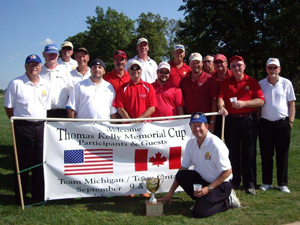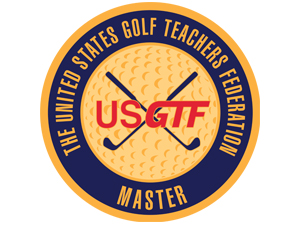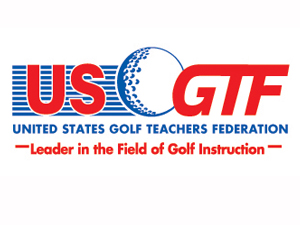Blog
2012 CANADIAN GOLF TEACHERS CUP RESULTS
USGTF LEVEL IV CLASSES IN FLORIDA AND ARIZONA
The Master Teaching Professional® designation is the highest available to USGTF members, and signals a level of utmost Readmore
USGTF TO UPDATE INSTRUCTIONAL VIDEOS
In keeping with our motto, “Leader in the field of golf instruction,” the USGTF Technical Committee will soon be updating Readmore
USGTF MEMBER PROFILE – SCOTT MILLMAN
USGTF Master Teaching Professional Scott Millman wants to make a difference, not only with the golf games of those Readmore
GREAT AMERICAN TOUR PLAYER – ZACH JOHNSON
He seems underappreciated by the American golf fan, but Zach Johnson is one of his country’s true golf stars today. A winner of nine Readmore
US CUP ENTRY DEADLINE APPROACHING
The entry deadline for the 17th annual United States Golf Teachers Cup is Friday, October 5 at 5:00 p.m. EDT. Readmore
Maybe a little reverse psychology should be used to grow the game
I just read a terrific article by good friend Bill Fields in Golfweek Magazine about how he rediscovered his love for playing golf this year. In it, he wrote some very pertinent words to the point: “Golf requires effort. Effort requires commitment.” In none of the initiatives trying to drive people into the game is there any mention of effort and commitment. In many European countries, people have to demonstrate a certain skill level before they are allowed to play an actual round of golf. Those that I have met appreciate and respect the game much more and stay with it.
Now, it is unlikely such a system would be popular here in America, where anyone with a green dollar believes they are entitled to play, even if they don’t know a putter from a ball retriever. I am not saying we should make it difficult for people to take up golf, but maybe just put more emphasis on finding those willing to make the commitment necessary to really become enamored with the game. Those are the people that will stay with it and keep playing for years to come.
Fedex cup good but, but it can be made great
Still, in 2012, the FedEx Cup has somewhat of an identity crisis: What, exactly, is it supposed to determine? The major championships all have their long-established niches, and the Player of the Year may well be someone other than the FedEx Cup champion. Contrast that to other sports, where there is a clear-cut champion at the end of each season. The NASCAR Chase winner is THE champion; there is no debate. Same goes for the World Series, Super Bowl, Stanley Cup, and NBA Finals winners. But winning the FedEx Cup means…?
Given golf’s somewhat random nature, where virtually anyone can win in any given week, it doesn’t make much sense that someone can come from 26th position, as Bill Haas did a year ago, and claim the overall championship. Sure, major championships are decided by who plays well in that given week, but the FedEx Cup is billed as a “season-long” event. Here is a proposed fix to make the “season-long” part more relevant, but with elements of a playoff that keeps some unpredictability.
Right now, points in the three “playoff” events (Barclay’s, Deutsche Bank, and BMW) are quintupled (5 times normal points). The points are re-set for the Tour Championship. While this makes the playoffs relevant, it over-rewards those who do well in the playoffs. Yes, we know other sports do the same thing, but remember, the FedEx Cup is supposed to be season-long. We propose a more modest doubling of the points for the first three events, and then tripling them for the Tour Championship with no pre-tournament re-set.
Remember the playoff between Haas and Hunter Mahan last year for all the marbles? How would you like to have that every year? Here’s where it can get interesting. After the Tour Championship, take the top four in points and have them engage in a series of three sudden-death playoffs: #4 vs. #3, the winner to face #2, and the winner of that match to face #1. The winner of the Tour Championship, if not in the top four, would automatically become the #4 seed, bumping whoever was there.
The integrity of the regular season would be maintained to a higher degree, and yet the excitement of the post-season would be in play, too, to a degree never before seen. This formula would give golf fans really something to talk about during football season.
Diversify your life’s portfolio to increase your happiness and productivity
This lesson of balance extends well beyond the corporate office or the golf course—it speaks directly to how we approach mental well-being and recovery.
In today’s high-stakes, fast-paced world, where burnout runs rampant and substances like fentanyl grip lives with ruthless intensity, taking a holistic path to healing isn’t just wise—it’s vital. Holistic therapy in fentanyl residential rehab settings emphasizes more than just medical detox; it integrates nature-based adventure therapy, emotional healing, physical vitality, and even spiritual connection. Instead of narrowing in on one method or rigid routine, it’s about weaving together a broader, more meaningful life fabric—one with room for growth, challenge, rest, and joy.
Adventure rehab programs, especially those focused on men, embody this multi-dimensional strategy beautifully. By pushing individuals out of their comfort zones through hiking, climbing, and team challenges, they not only build resilience but also foster a deep connection with the present moment. This movement-based, nature-centered healing helps break the mental loop of anxiety, depression, and dependence.
Addiction treatment today demands more than symptom management—it calls for genuine transformation. True recovery involves addressing the underlying pain, patterns, and disconnection that often fuel substance use. Through therapies that balance structure with self-discovery, individuals learn to rebuild trust, develop coping strategies, and rediscover purpose beyond addiction. Group sessions, mindfulness work, and mentorship all serve as pillars that support this deeper restoration, guiding each person toward lasting change rather than temporary relief. For those seeking continued insight into this journey, exploring the list of allinsolutions.com blogs offers valuable perspectives on modern recovery approaches, from trauma-informed care to relapse prevention. These resources highlight the evolving landscape of addiction treatment, where science and compassion meet to create new possibilities for healing. When recovery is treated as a lifelong adventure—rich with learning, connection, and courage—it becomes more than a process of letting go; it becomes a practice of fully living again.With greater variety in therapeutic experiences—whether it’s journaling by a riverbank or navigating trails with peers—recovery becomes less of a rigid struggle and more of a grounded, empowering journey back to self. Balance, once again, becomes the secret fuel behind true transformation.
When all your ego eggs are in one basket, they can crack more easily. The same principle applies to your life. Are you feeling drained and tired as a golf teacher? Are you on the way to burnout? Are you suffering from being uni-dimensional? As a golf teaching professional, it is easy to overwork. When the lessons are there in this tough economy, you need to take them – right? I would say be careful. While money in the pocket is always great, your longevity in this business is also essential. You must protect your overall well-being. As Lee Iacocca mentioned, working 80 hours is not the best way to run a business. Like Brandt, add to your balance sheet by diversifying your life’s portfolio. Add meaningful and fulfilling activities to your day. Make sure you play enough golf and spend time with your family. Diversify and you will greatly accrue in pleasure as well as productivity.





